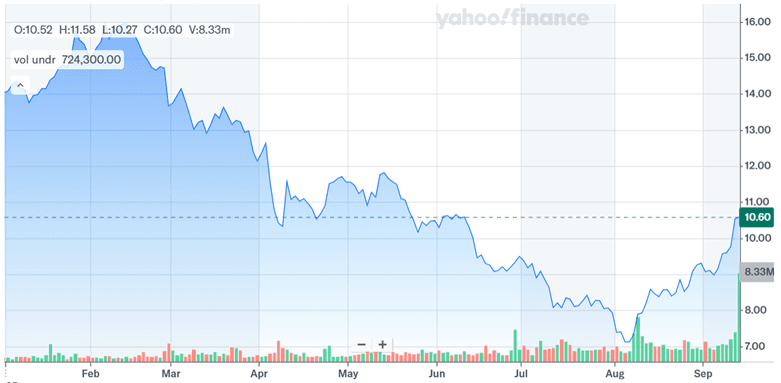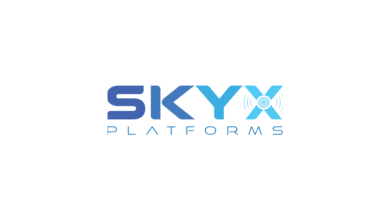Jamf Holdings’ $1.4 Billion Shakeup: Citigroup Tapped As Vista Plots Its Exit!

Jamf Holding Corp. (NASDAQ:JAMF), the Apple-focused enterprise device management and security software provider, is reportedly exploring a potential sale as private equity sponsor Vista Equity Partners seeks to fully exit its 34% stake. According to sources, the tech small-cap has retained Citigroup to advise on the process and has already been in discussions with prospective buyers. Vista, which took the company public in 2020 and remains its largest shareholder, appears to be capitalizing on Jamf’s recent operational improvements and stabilizing profitability. The news follows a strong second quarter, during which Jamf exceeded guidance with 15% year-over-year revenue growth, 19% non-GAAP operating margins, and $710 million in annual recurring revenue (ARR). Given this backdrop, it will be interesting to analyze what Jamf brings to the table for potential acquirers.
Potential Valuation Uplift
Jamf’s current public market valuation appears disconnected from its underlying operating performance, which could open the door for multiple expansion in a private setting. As of mid-September 2025, Jamf trades at just 2.58x LTM enterprise value to revenue and 2.11x LTM price to sales. Even its forward-looking NTM EV/Revenue multiple of 2.34x and EV/EBITDA of 9.59x remain well below the SaaS industry median, despite the company’s improved profitability and continued ARR growth. The company’s shift toward higher-margin security products, bolstered by the Identity Automation acquisition, is also beginning to take shape. In Q2 2025, Jamf’s Security ARR grew 40% year-over-year, crossing the $200 million mark, and overall recurring revenue reached 98% of total revenue. The company also posted $103 million in trailing twelve-month unlevered free cash flow, representing a 15.4% margin, with expectations for full-year free cash flow growth of at least 75%. With a more scalable go-to-market model, better cost discipline, and higher-value bundled offerings now being rolled out, Jamf may be able to command a higher multiple in a buyout scenario. Prospective buyers would be evaluating not just the core device management offering but also Jamf’s potential to become a broader Apple enterprise platform, a niche with limited competition and a loyal customer base. These dynamics suggest that the current market undervaluation could be corrected in a strategic or sponsor-led transaction.
Sponsor Exit Creates Opportunity
Vista Equity Partners’ decision to explore a full exit from its 34% stake in Jamf removes a significant overhang and presents a clear pathway for control-oriented buyers. Vista has been the dominant shareholder since taking Jamf public, and its presence may have dissuaded some potential bidders due to governance constraints. With Vista now actively looking to sell its position and Citigroup engaged to lead the process, the path is clearer for both private equity firms and strategic acquirers interested in the Apple enterprise ecosystem. The sponsor’s involvement also simplifies deal execution, particularly for buyers seeking a majority position without the complications of a fragmented cap table or uncertain board alignment. Vista’s exit coincides with Jamf’s transition toward more stable and predictable growth, including increased AI integration, improved channel efficiency, and higher enterprise sales leverage. Additionally, the Identity Automation acquisition—which closed in April 2025—has been fully integrated, with its CEO now leading Jamf’s education business, driving cross-sell activity. A transaction now would allow a new buyer to benefit from these synergies while participating in Jamf’s broader transition from a device management vendor to a full-stack Apple-first enterprise platform. The combination of Vista’s intent to exit and Jamf’s improving fundamentals could create a compelling value proposition, especially for a buyer with the operational resources to accelerate scale and margin improvement.
Strong Market Position
Jamf’s leadership in Apple enterprise device management and security gives it a defensible position in a niche market with high switching costs and consistent demand tailwinds. The company’s products are used by over 71,000 customers worldwide, including enterprises, schools, hospitals, and government agencies. In Q2 2025, Jamf secured several major contracts, including a 10,000-device deployment for a Middle Eastern airline and a full migration win from a German auto manufacturer. These use cases highlight Jamf’s ability to serve complex, regulated industries with specific security and mobility requirements. The company’s bundled product strategy—Jamf for Mobile, Jamf for Mac, and Jamf for K-12—has increased deal sizes and improved customer retention. Security capabilities, particularly in mobile threat defense, DNS protection, and Zero Trust access, have added a layer of differentiation. The launch of Android enrollment in July 2025 further expands Jamf’s relevance in mixed-device environments, making it easier for organizations to manage and secure both Apple and non-Apple devices under a single platform. In education, Jamf’s position has strengthened with the integration of Identity Automation, enabling better classroom device control, parental oversight, and compliance tracking. These combined offerings create a deep moat around the business, which is difficult for traditional UEM vendors to replicate, especially given Jamf’s Apple-first architecture and customer-centric customization. With expanding AI capabilities, automation tools, and a growing international partner ecosystem, Jamf has positioned itself as a critical enabler of secure, mobile-first enterprise workflows—a narrative that could attract premium bids in an M&A process.
Final Thoughts – A Deal Unlikely To Happen?

Source: Yahoo Finance
The recent move of Jamf exploring a potential sale comes after a year in which the company’s shares have declined by more than 20%. Despite the stock's underperformance, Jamf’s underlying fundamentals and strong niche positioning may attract both strategic and financial buyers, though deal execution risks remain. Despite the sale exploration gaining momentum, there are still hurdles that could affect a successful transaction. First, macroeconomic conditions remain fluid, with rising interest rates and mixed equity markets creating uncertainty in both public and private tech valuations. These conditions may widen the bid-ask spread, especially if Vista’s valuation expectations do not align with what strategic buyers or private equity sponsors are willing to pay. While Identity Automation has shown early promise, its long-term contribution to ARR growth, margin expansion, and retention will require further proof points. Additionally, Jamf’s business is still concentrated in the Apple ecosystem, and while this provides a strong niche, it may limit the universe of potential strategic buyers. Any acquirer will also need to align with Jamf’s strong channel focus and platform bundling strategy, which requires thoughtful go-to-market execution. Thus, we believe that it may not be all that easy for Jamf Holdings to get sold despite its solid position in the Apple enterprise management space.




